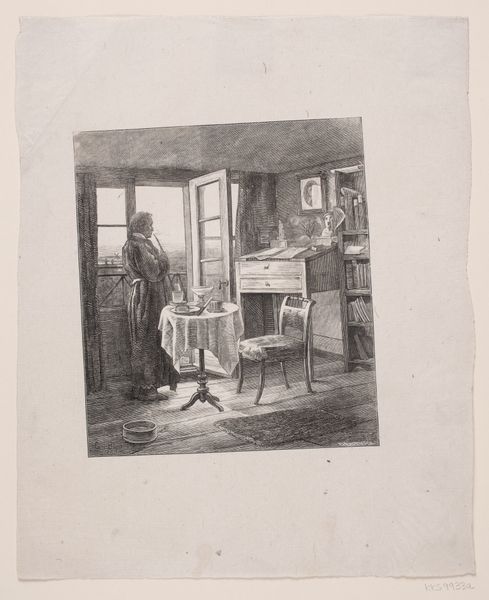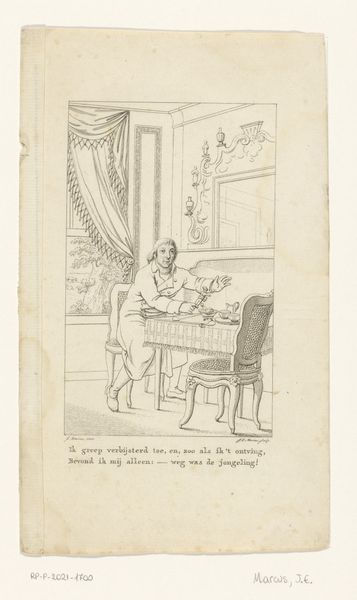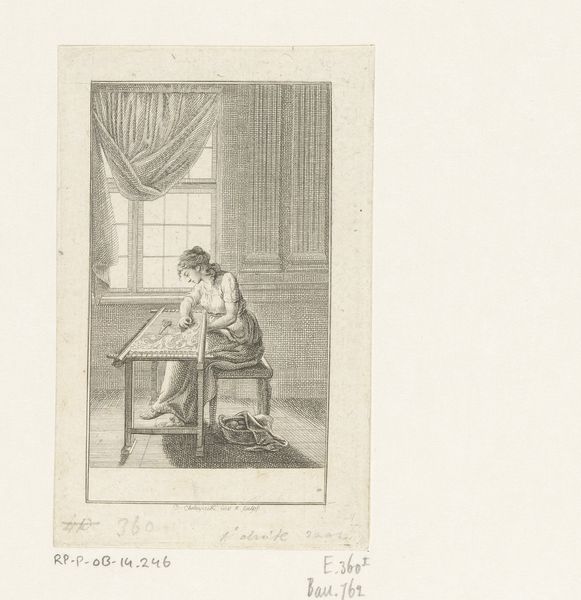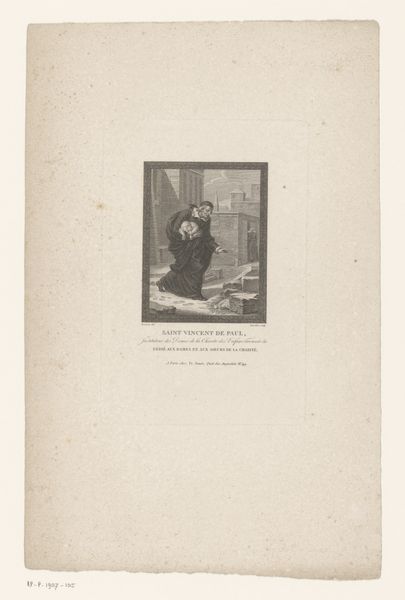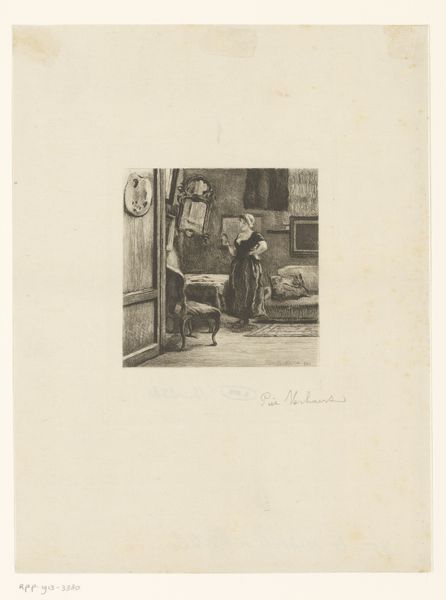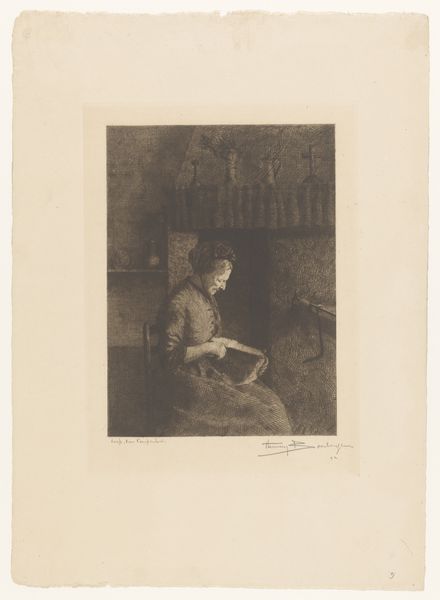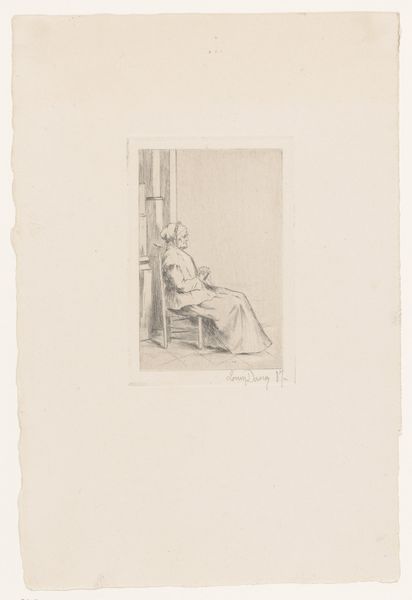
drawing, print, etching
#
portrait
#
drawing
# print
#
etching
#
genre-painting
#
realism
Dimensions: 195 mm (height) x 157 mm (width) (bladmaal)
Editor: Here we have Vilhelm Kyhn's "Portræt af malerens kone spillende klaver," or "Portrait of the painter's wife playing the piano," created in 1856. It's an etching. It feels incredibly intimate, like we're getting a private glimpse into their domestic life. What is your take on this piece? Curator: It's important to remember that depictions of domesticity like this served specific socio-political functions. During the 19th century, images of women in the home reinforced ideals of female virtue and the importance of the family unit, which was seen as the bedrock of society. It’s interesting to see it through an etching; prints democratized images. Did Kyhn want a wider distribution for this seemingly intimate image of his wife? Editor: So, while it appears personal, it's contributing to a broader narrative about the role of women? The distribution through printmaking really changes how we should consider the artwork, doesn’t it? Curator: Precisely. Etchings made art more accessible to a wider audience. Genre scenes and portraiture like this found an audience with the growing middle class eager to display their own status and values. How might owning this etching contribute to their sense of self? Editor: It's like owning a little piece of aspirational domestic bliss. Did the Realism movement play into that at all? I know it's tagged as Realism. Curator: Absolutely. Realism aimed to depict everyday life accurately. This scene, while intimate, is carefully constructed to present a specific vision of domesticity—refined, cultured, and harmonious. The curtain and music sheets add to this atmosphere. Realism and social values became intertwined, what is revealed but also, importantly, what is concealed. Editor: It's fascinating how what seems like a simple domestic scene can reveal so much about the societal values of the time and the medium itself impacts the message. Thank you! Curator: Indeed, it prompts us to consider art’s role in shaping public perception and cultural norms. The political power of domestic imagery is always ripe for interrogation.
Comments
No comments
Be the first to comment and join the conversation on the ultimate creative platform.
